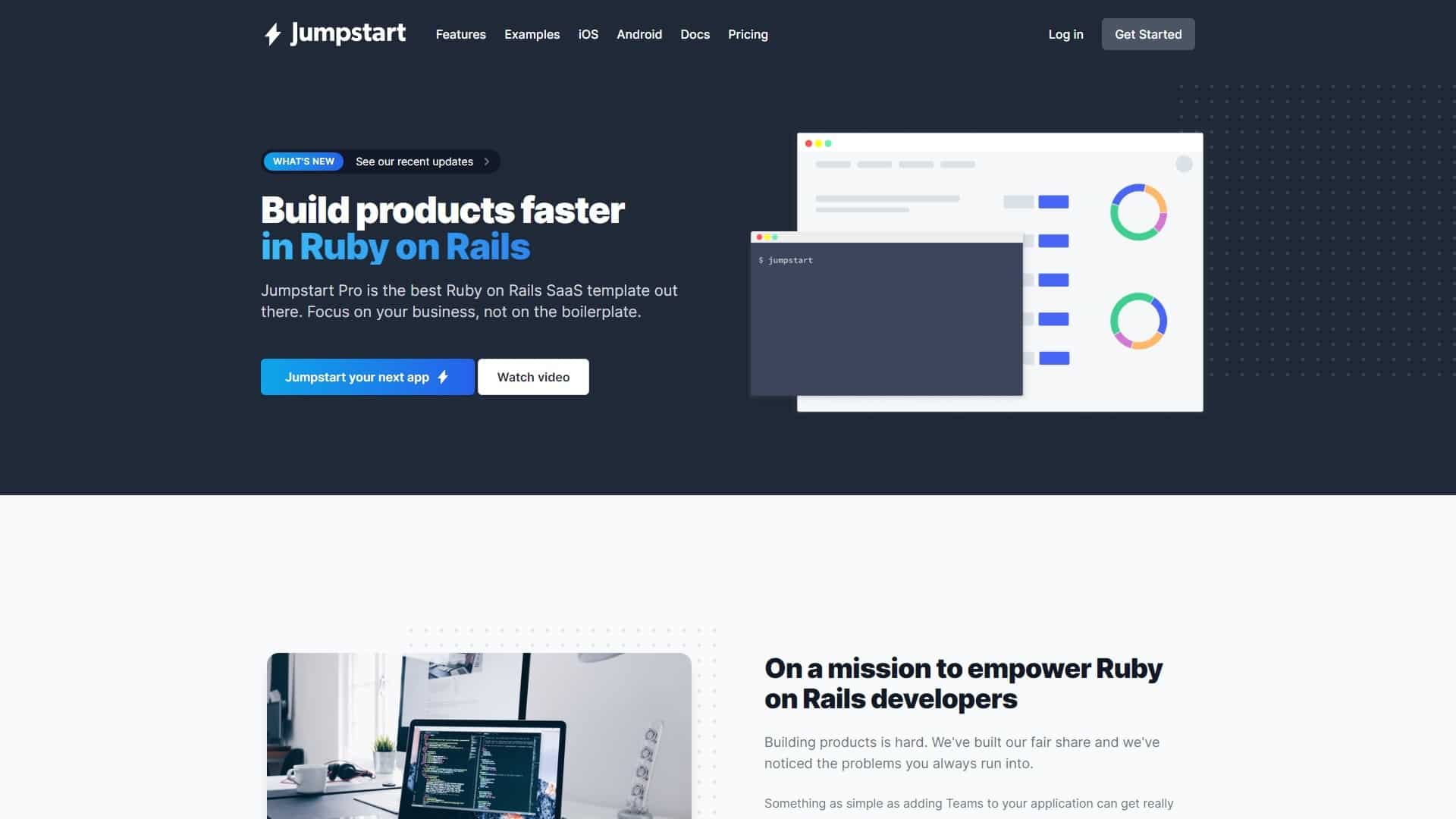
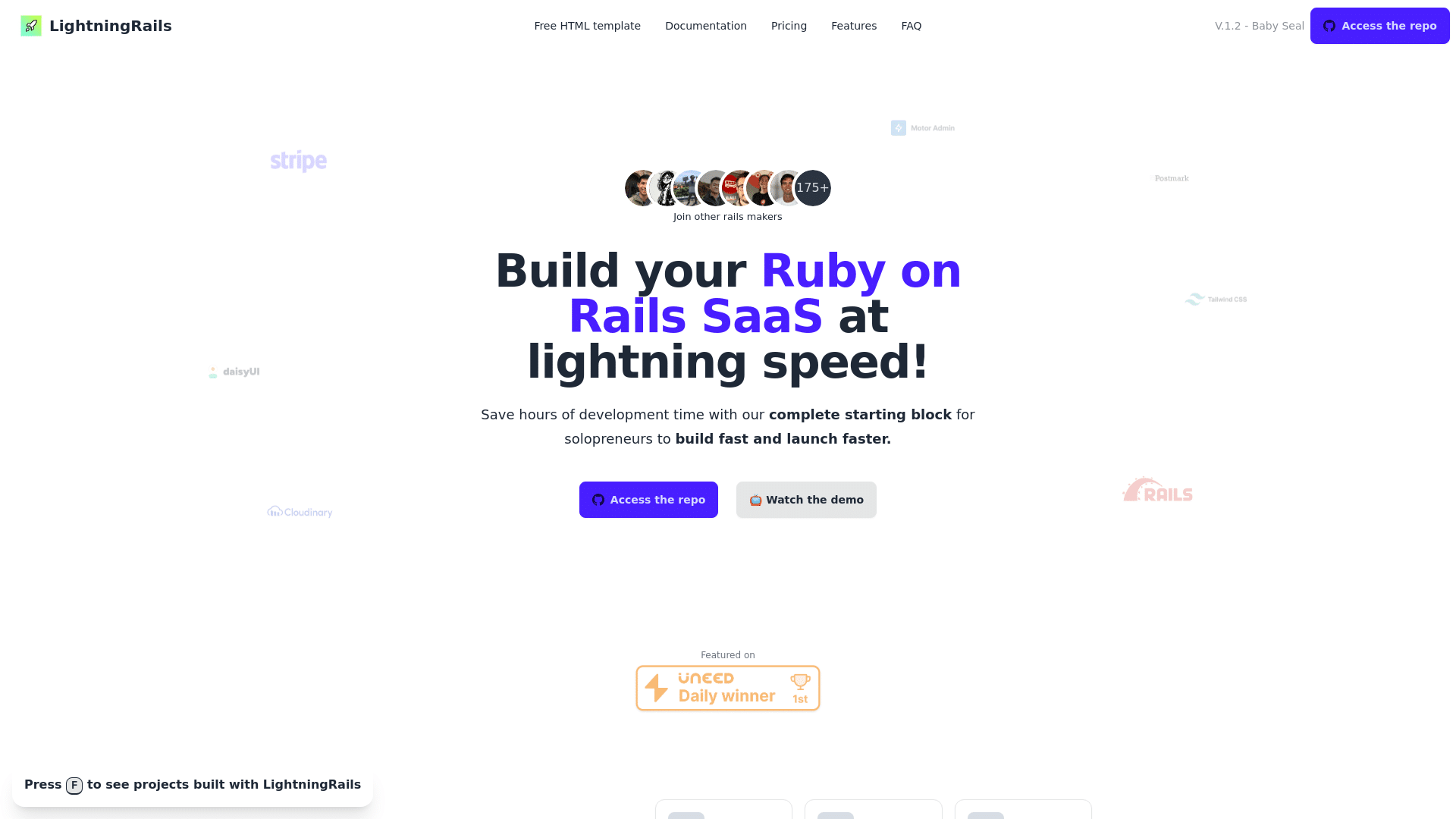
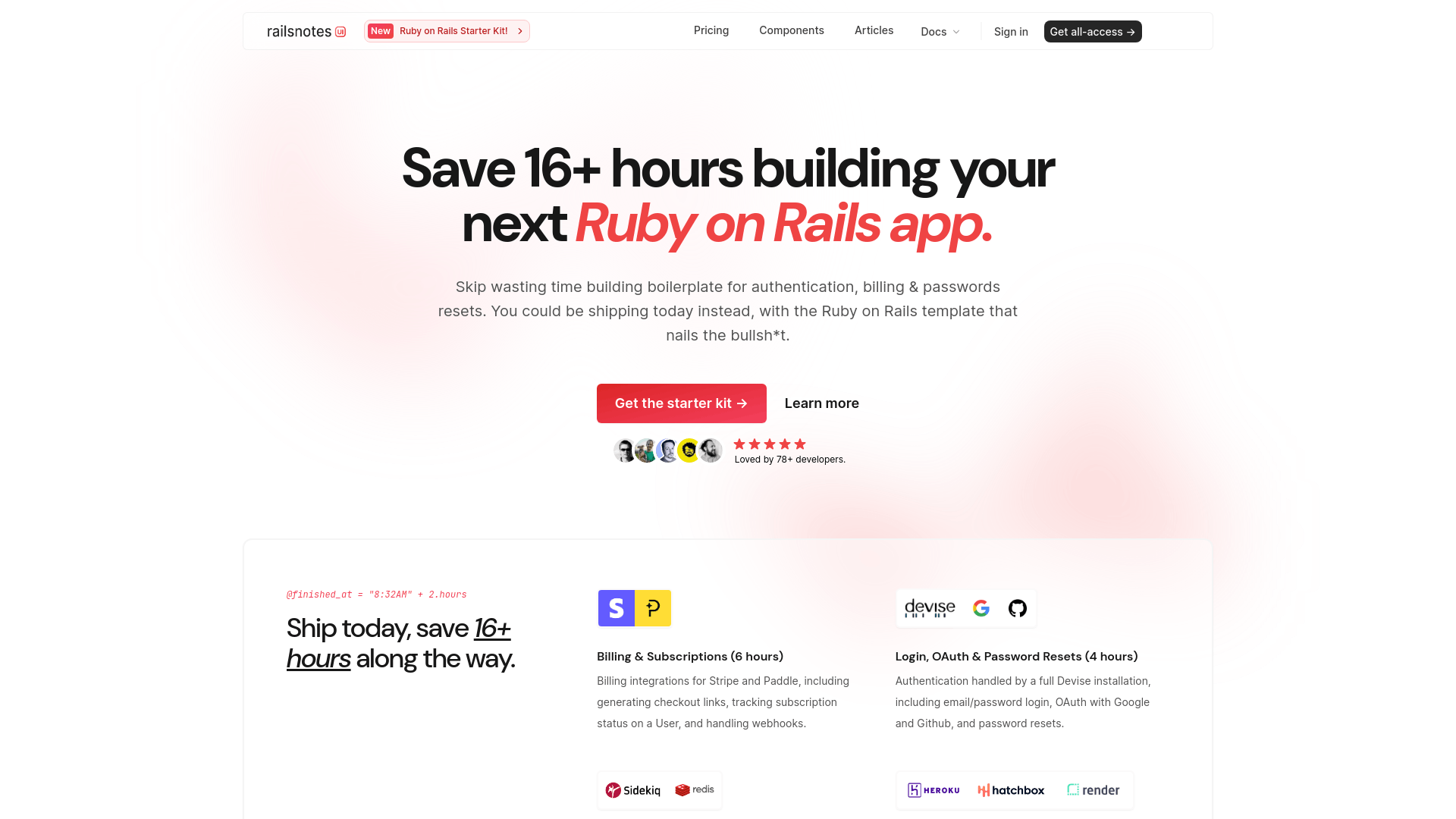
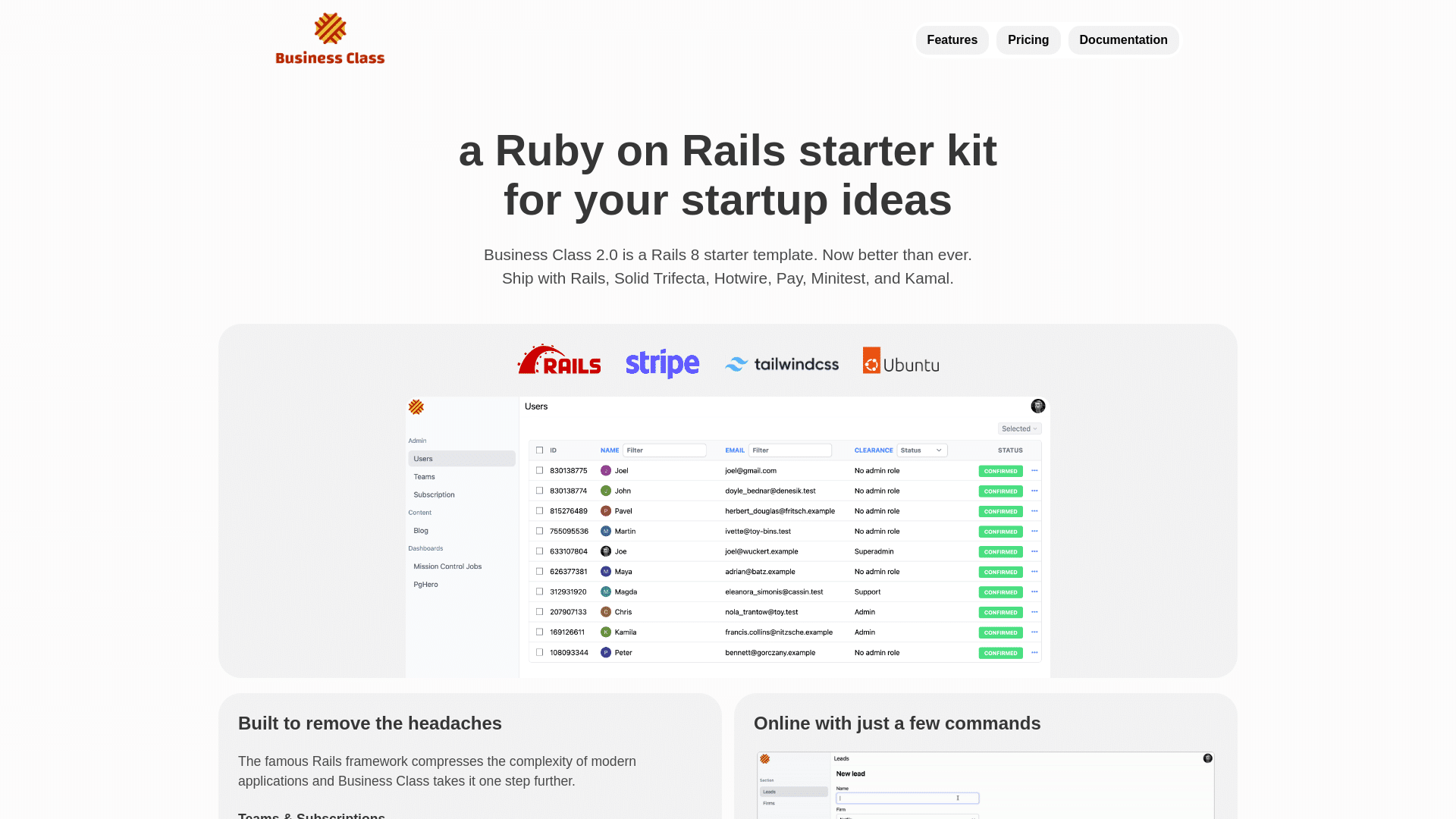
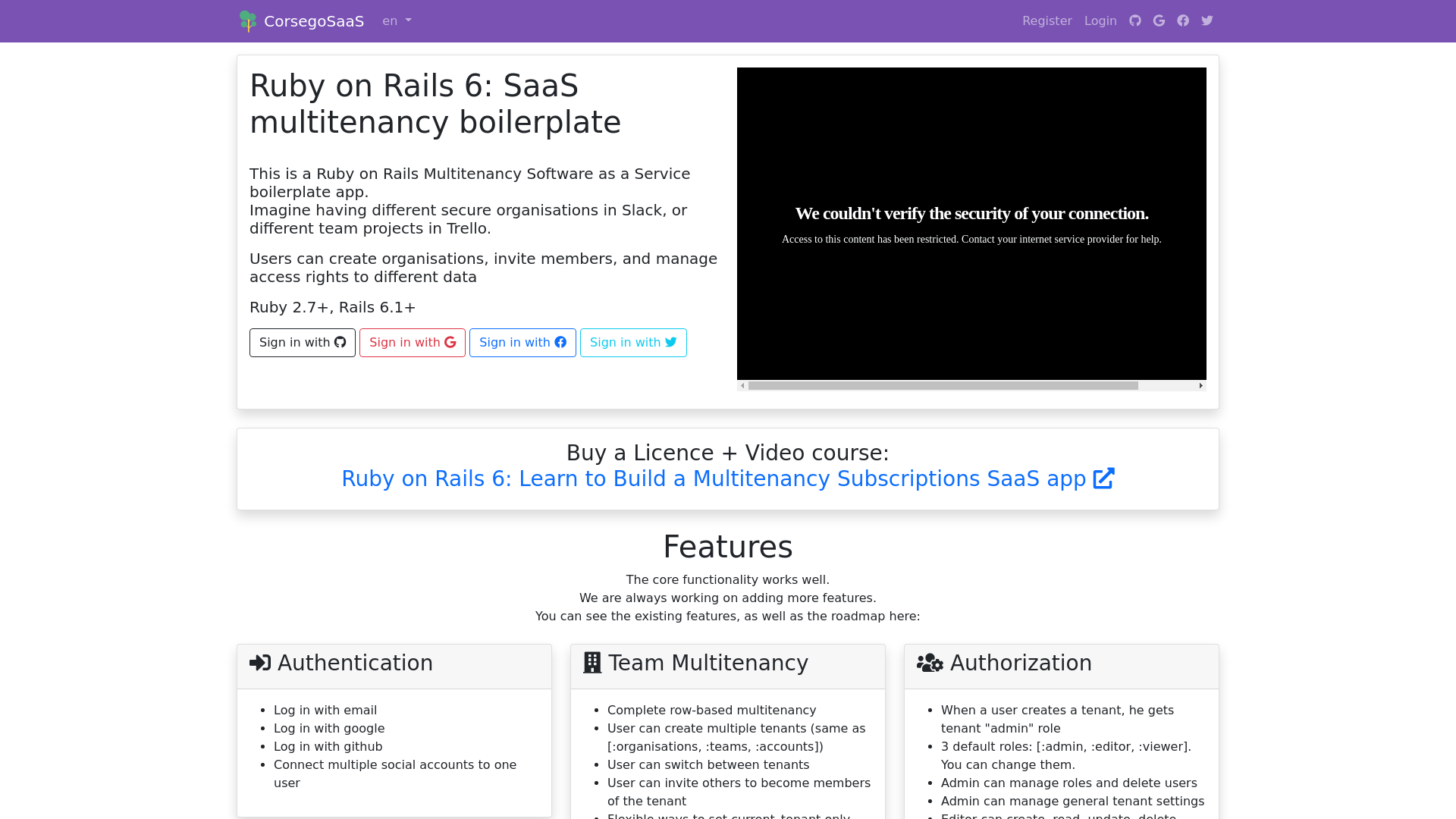

A Ruby on Rails SaaS boilerplate is a pre-built template or starter kit that includes all the necessary functionalities required to build a Software as a Service (SaaS) application quickly. It provides a foundation for developers to build their application on top of and save significant time and effort. Some of the typical features that a Ruby on Rails SaaS boilerplate includes are authentication, authorization, user management, subscription billing, and a dashboard. These features are crucial for any SaaS application, and building them from scratch can take a considerable amount of time. Using a Ruby on Rails SaaS boilerplate can significantly speed up the development process and allow developers to focus on the core features of their application. There are several options available in the market, and developers can choose the best one based on their specific requirements. Some of the best Ruby on Rails SaaS boilerplates include Jumpstart, Bullet Train, CorsegoSaaS. These boilerplates provide a solid foundation for building SaaS applications and come with documentation and support to help developers get started quickly.
Ruby on Rails is a widely used web application framework with a massive following of developers and a considerable presence on the web. The framework has over 53.3k stars on Github, indicating its popularity and strong community support. There are currently over 1,176,889 live websites built using Ruby on Rails. The framework was created by David Heinemeier Hansson, who released it in 2004 while working on a project called Basecamp.
Ruby on Rails is an open-source web application framework written in Ruby programming language. It is designed to make building web applications easier and faster by providing a set of conventions and abstractions to handle common web development tasks. Ruby on Rails has gained immense popularity due to its simplicity, flexibility, and productivity. It has a vast community of developers and has been used to build many popular websites such as Basecamp, GitHub, Airbnb, and Shopify.